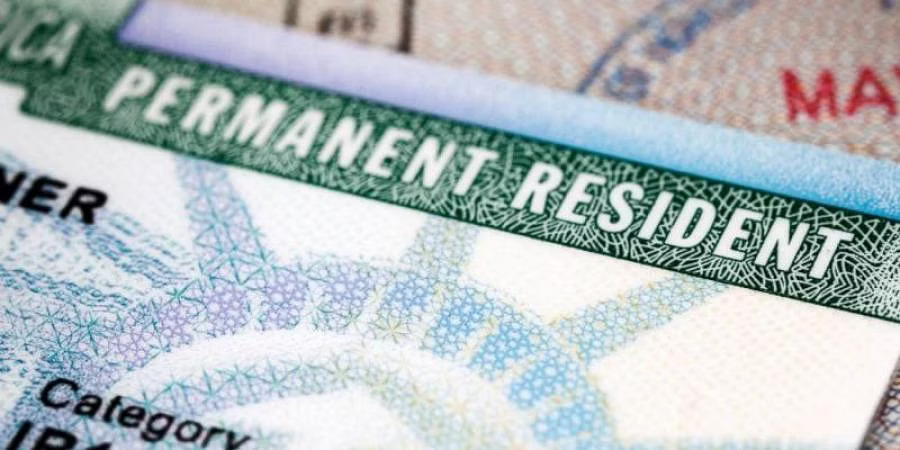Introduction
The United States has long been a land of opportunity for people around the world, attracting immigrants seeking a better life, higher education, or professional opportunities. To achieve their American dream, many immigrants pursue an immigrant visa or a green card. But what exactly are these two terms, and how do they relate to each other? In this article, we will explore the differences and connections between an immigrant visa – green card, shedding light on the intricate U.S. immigration system.
I. Understanding the Immigrant Visa
1.1 The Gateway to the United States
An immigrant visa serves as the initial step for foreign nationals who wish to establish permanent residency in the United States. It’s a document that grants the holder permission to enter the country with the intention of becoming a lawful permanent resident. Immigrant visas are issued by the U.S. Department of State and can be obtained through family sponsorship, employment opportunities, or specific humanitarian programs.
1.2 Types of Immigrant Visas
The U.S. immigration system offers various categories of immigrant visas, each with its specific eligibility requirements. Some of the most common immigrant visa categories include:
-
Family-sponsored visas: These are for individuals with close relatives who are U.S. citizens or permanent residents.
-
Employment-based visas: Reserved for individuals with job offers from U.S. employers or those with exceptional skills.
-
Diversity Visa (DV) program: This program allocates a limited number of immigrant visas through a lottery system to nationals from countries with historically low immigration rates to the United States.
-
Asylum and refugee visas: These are for individuals seeking protection due to persecution in their home countries.
II. The Green Card: A Permanent Resident Status
2.1 What is a Green Card?
A green card, formally known as a United States Permanent Resident Card, is the document that establishes a foreign national’s lawful permanent resident status in the United States. Possessing a green card is often colloquially referred to as having “permanent residency” in the United States.
2.2 The Path to a Green Card
While an immigrant visa serves as the initial entry point into the United States, a green card signifies the transition from temporary immigrant status to lawful permanent residency. After entering the U.S. on an immigrant visa, individuals must typically apply for a green card to become permanent residents. This process involves a series of forms, interviews, and background checks.
III. Immigrant Visa vs. Green Card: The Distinctions
3.1 Purpose and Duration
The primary difference between an immigrant visa and a green card lies in their purpose and duration. An immigrant visa is a temporary visa granted to individuals who wish to immigrate to the United States. Once they enter the country on an immigrant visa, they must take steps to secure a green card, which grants them permanent resident status.
3.2 Eligibility and Application Process
The eligibility criteria and application process for immigrant visas and green cards vary significantly. Immigrant visas often require sponsorship from family members or U.S. employers, while green card applicants must meet specific requirements related to family relationships, employment, or humanitarian concerns.
3.3 Rights and Benefits
Holders of green cards enjoy certain rights and benefits that immigrant visa holders do not. These include the right to live and work in the United States indefinitely, access to most public benefits, and the ability to apply for U.S. citizenship after meeting certain residency and other requirements. Immigrant visa holders, on the other hand, typically have more limited rights and benefits.
IV. Transitioning from Immigrant Visa to Green Card
4.1 Consular Processing
After receiving an immigrant visa, the transition to permanent residency typically involves a process known as consular processing. This process involves an interview at a U.S. embassy or consulate abroad. Once approved, the immigrant visa holder can enter the United States and begin the process of applying for a green card.
4.2 Adjusting Status
Some individuals may also adjust their status to permanent residency while already in the United States without leaving the country. This process is referred to as “adjustment of status.” It is generally available to those who entered the U.S. on specific types of visas, such as a K-1 visa for fiancés or fiancées of U.S. citizens.
V. Conclusion
Is immigrant visa a green card? In summary, an immigrant visa and a green card are distinct components of the U.S. immigration system, each serving its unique purpose. An immigrant visa allows foreign nationals to enter the United States with the intention of becoming permanent residents, while a green card grants them permanent residency status. The transition from an immigrant visa to a green card marks a significant step in the journey to establish permanent roots in the United States. Understanding the differences and connections between these two concepts is crucial for individuals navigating the complex U.S. immigration process.
While the process of obtaining an immigrant visa and a green card may seem complex, it offers numerous opportunities for individuals seeking a better life in the United States. By navigating the immigration system with the right information and support, many immigrants can realize their dreams of living and working in the land of opportunity.






